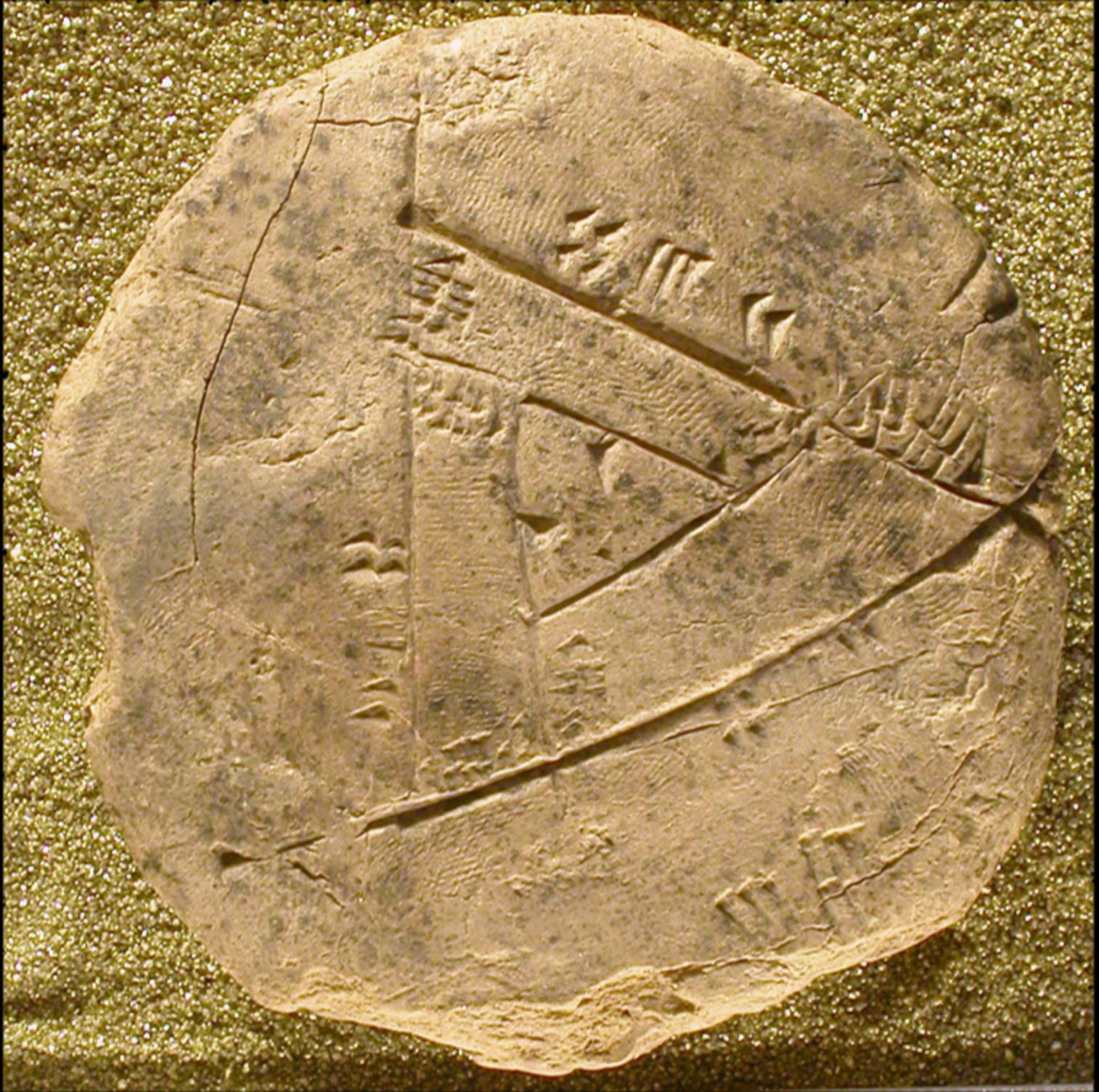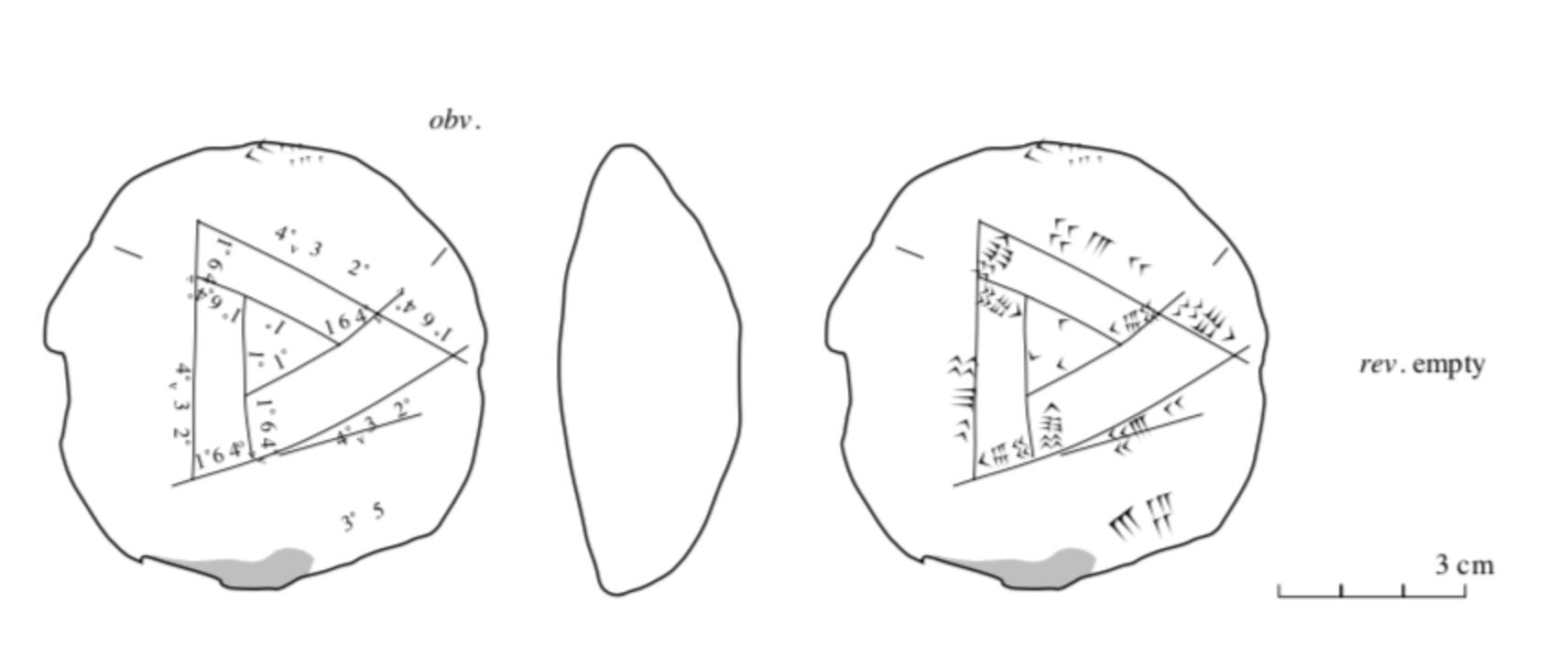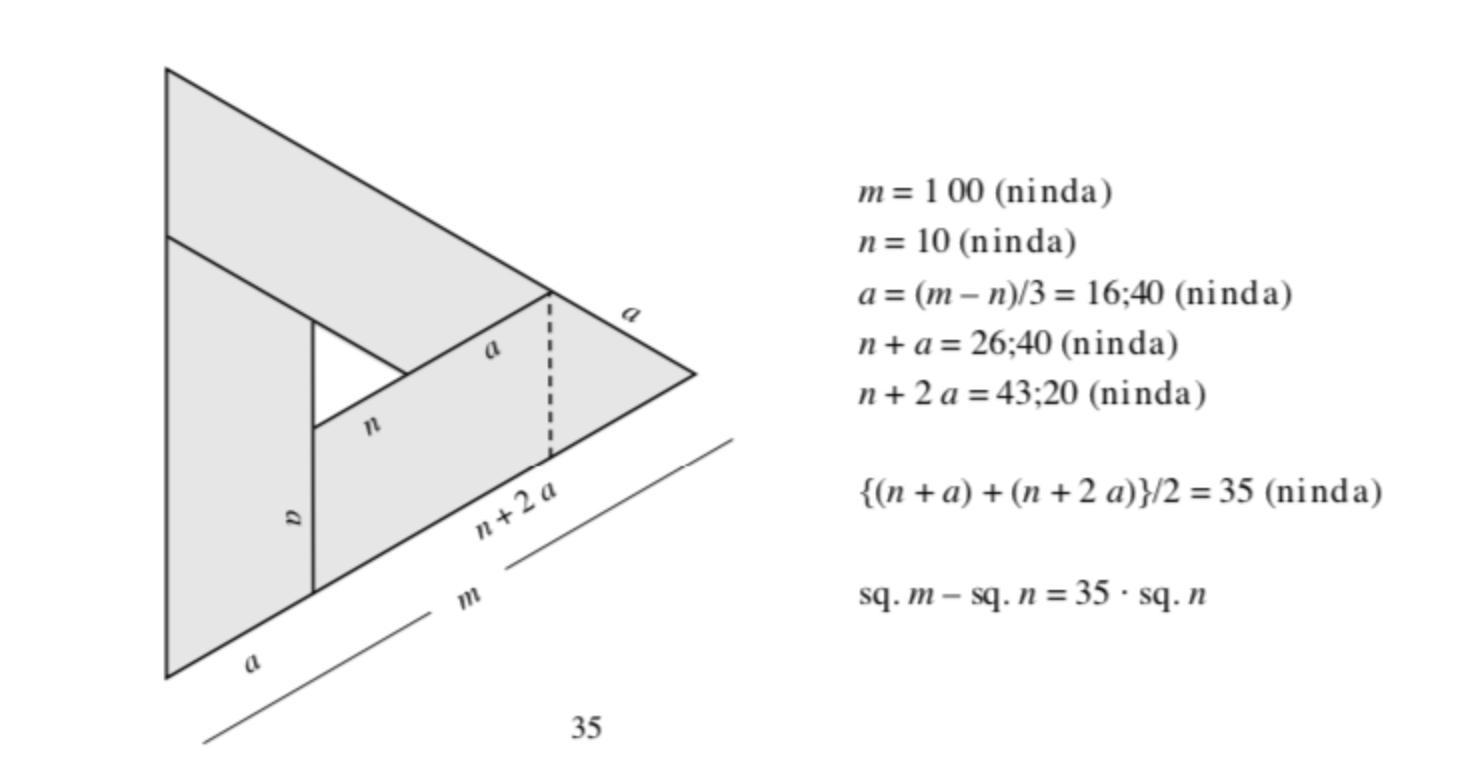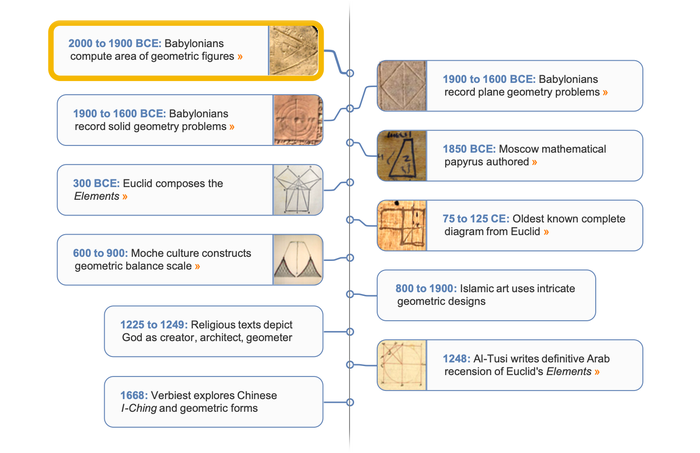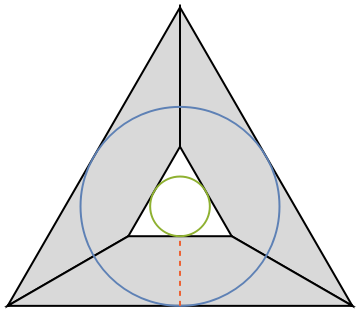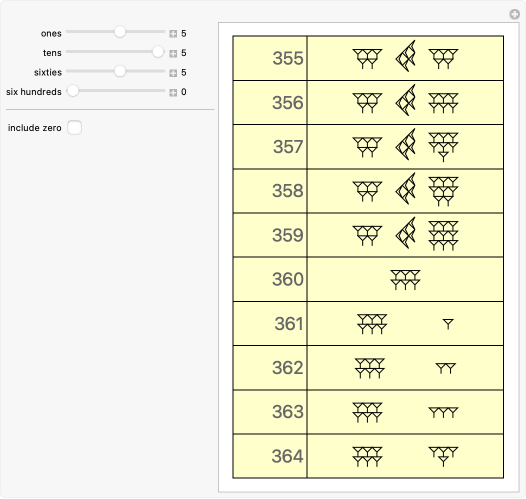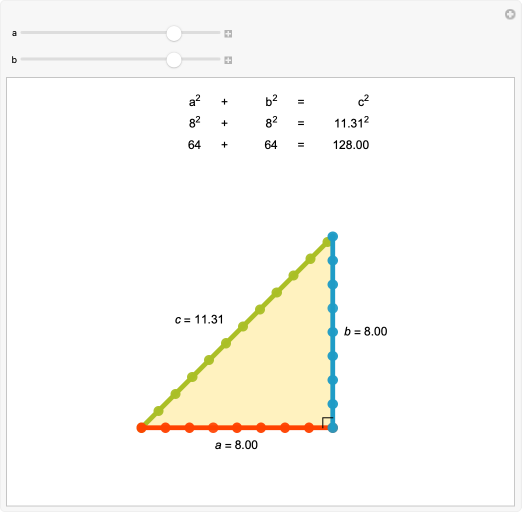around 2000–1900 BCE
Babylonian Nested Triangle Tablet
Triangular band divided into trapezoids
This Babylonian tablet gives a figure of two nested equilateral triangles divided into three congruent trapezoids, with numbers annotated along various edges and the number 35 prominently written in cuneiform in the lower right. It is likely this tablet was an unfinished student exercise to compute the area of the band.

The annotations in the figure indicate various lengths. In particular, the inner triangle side length is indicated with the cuneiform glyph for 1 (which actually stands for the number 10—an interpretation that must be inferred due to the lack of a positional zero in Babylonian number notation), the trapezoid side lengths as the glyphs 1 6 4 (meaning 16 + 40/60 = 50/3), and the length of the long trapezoid base as the glyphs 4 3 2 (meaning 43 + 20/60 = 130/3). The number 35 written at the bottom is the central median length of the trapezoid, which gives the trapezoid's area when multiplied by its height.
